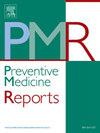Low uptake and poor knowledge of preconception sickle cell trait screening among pregnant women in Bushenyi District, southwestern Uganda: Implications for sustainable development goals
IF 2.4
3区 医学
Q2 PUBLIC, ENVIRONMENTAL & OCCUPATIONAL HEALTH
引用次数: 0
Abstract
Objective
This study aimed to assess the level of knowledge and uptake of preconception sickle cell trait (SCT) screening and identify associated factors among pregnant women in Bushenyi District, Southwestern Uganda.
Methods
We conducted a cross-sectional study between May 2024 and July 2024 among 177 pregnant women attending antenatal care services at Kampala International University teaching hospital in Bushenyi district southwestern Uganda. Data was collected using structured questionnaires to assess participants' knowledge of SCT and their screening uptake. Descriptive statistics were used to summarize the data, while the chi-square and multivariable logistic regression were used to explore factors statistically associated with screening uptake while eliminating confounders.
Results
At least 13 in 20 (57 %, n = 101) pregnant women in Bushenyi district are not knowledgeable about SCT screening, and education level and region of origin stood out as the predictors (OR = 1.77(95 %CI [1.16–2.76], p = 0.008);(OR = 0.48 (95 %CI [0.29–0.81], p = 0.006). Regarding the uptake of SCTS, only 2.8 % (n = 5) of pregnant women have ever been screened, and their region of origin was the single predictor of SCTS uptake (OR = 0.121; [95 %CI: 0.023–0.636], p = 0.013).
Conclusion
Awareness and uptake of preconception SCT screening among pregnant women in Bushenyi District are poor. This study calls for the integration of health education and genetic counseling into antenatal care services, contributing to realizing Sustainable Development Goal 3.2, which seeks to end preventable deaths of newborns and children under 5 years of age by the year 2030.
乌干达西南部布申伊地区孕妇孕前镰状细胞特征筛查的接受度低,知识贫乏:对可持续发展目标的影响
目的本研究旨在评估乌干达西南部Bushenyi地区孕妇孕前镰状细胞特征(SCT)筛查的知识水平和接受情况,并确定相关因素。方法对2024年5月至2024年7月在乌干达西南部布森伊地区坎帕拉国际大学教学医院接受产前保健服务的177名孕妇进行了横断面研究。使用结构化问卷收集数据,以评估参与者对SCT的了解及其对筛查的接受程度。采用描述性统计对数据进行总结,同时采用卡方和多变量logistic回归来探讨与筛查摄取相关的统计因素,同时消除混杂因素。结果20名孕妇中至少有13名(57%,n = 101)不了解SCT筛查,教育程度和原籍地区是预测因素(OR = 1.77(95% CI [1.16-2.76], p = 0.008); OR = 0.48 (95% CI [0.29-0.81], p = 0.006)。关于SCTS的摄取,只有2.8% (n = 5)的孕妇曾接受过筛查,她们的出生地区是SCTS摄取的单一预测因子(OR = 0.121;[95% CI: 0.023-0.636], p = 0.013)。结论阜申一区孕妇对孕前SCT筛查的认知度和接受度较低。这项研究呼吁将健康教育和遗传咨询纳入产前保健服务,有助于实现可持续发展目标3.2,该目标旨在到2030年消除新生儿和5岁以下儿童可预防的死亡。
本文章由计算机程序翻译,如有差异,请以英文原文为准。
求助全文
约1分钟内获得全文
求助全文
来源期刊

Preventive Medicine Reports
Medicine-Public Health, Environmental and Occupational Health
CiteScore
3.90
自引率
0.00%
发文量
353
 求助内容:
求助内容: 应助结果提醒方式:
应助结果提醒方式:


